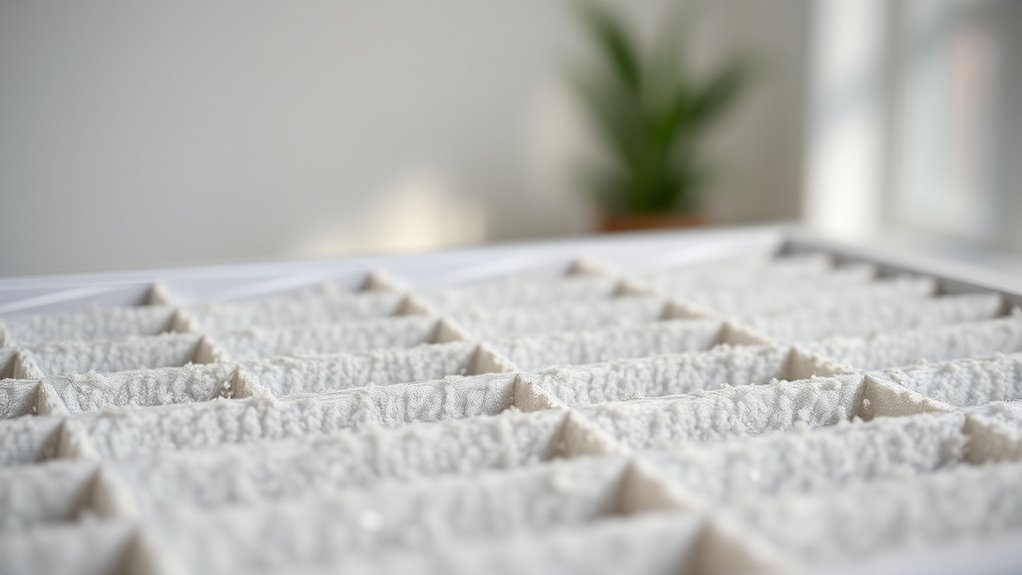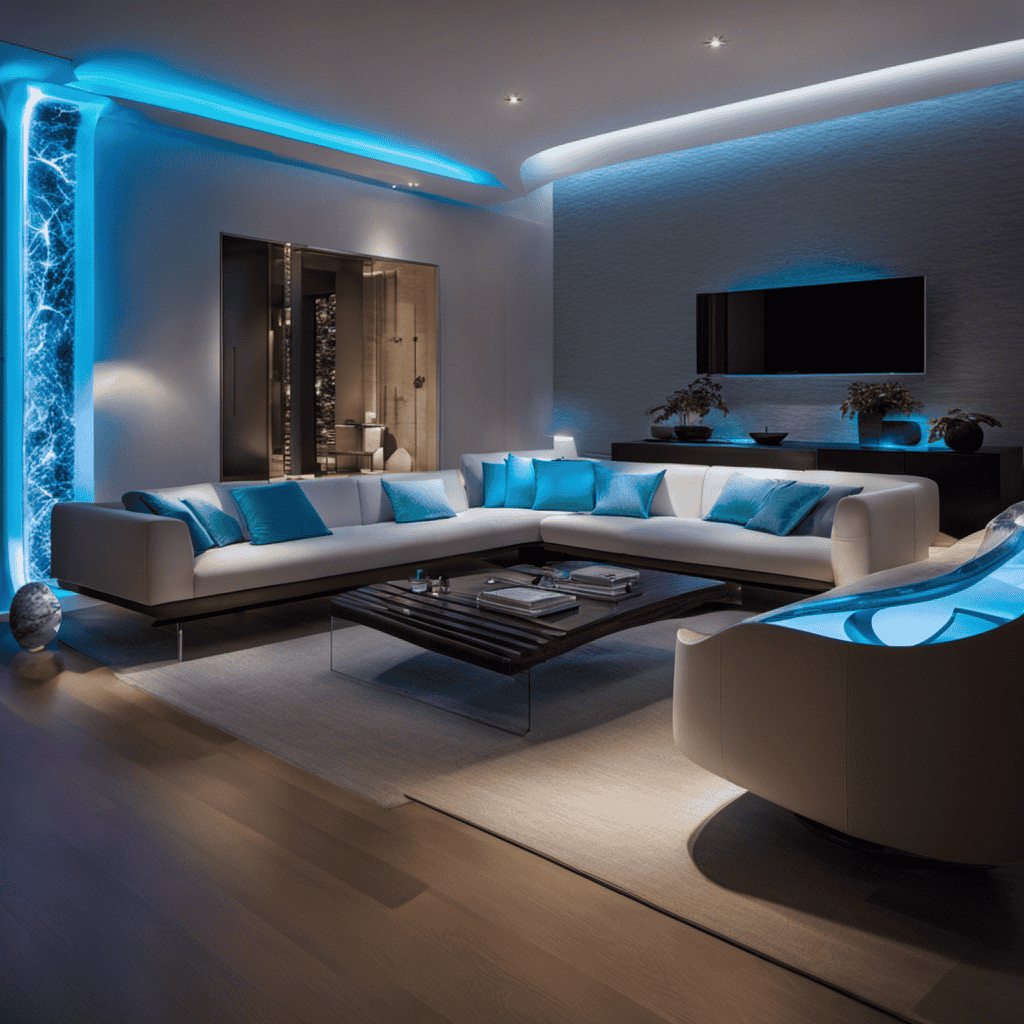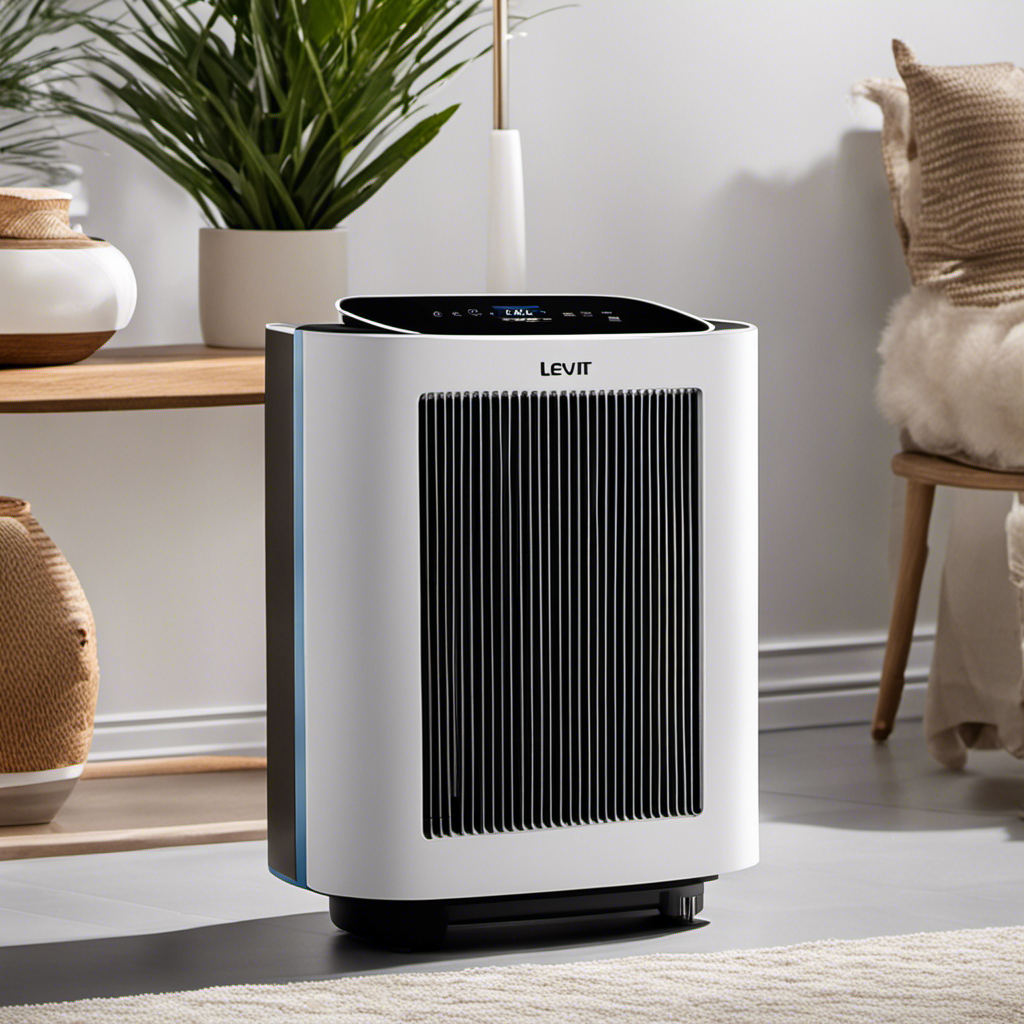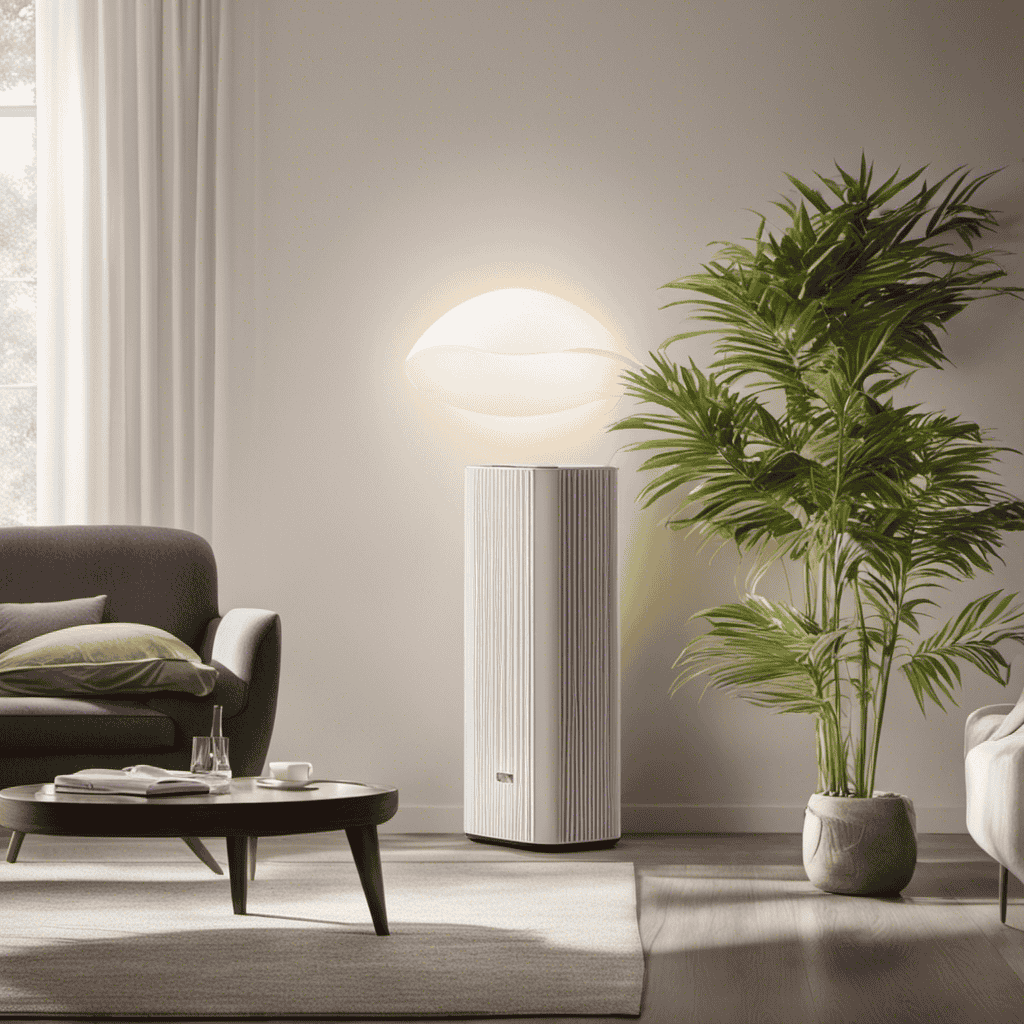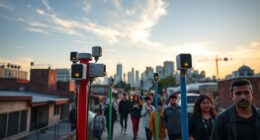You should generally replace your air purifier filter every 6 to 12 months, but this depends on your air quality, usage, and the type of filter. In polluted environments or with heavy use, more frequent changes—every 3 to 6 months—may be needed. Watch for signs like reduced airflow or bad odors, and follow your manufacturer’s recommendations. For more tips on maintaining your filter’s lifespan, keep exploring these helpful insights.
Key Takeaways
- Replace HEPA filters every 6 to 12 months, depending on usage and air quality.
- Change activated carbon filters every 3 to 6 months to maintain odor and pollutant removal.
- Inspect pre-filters and replace every 1 to 3 months, especially in high-pollution environments.
- Follow manufacturer guidelines for specific filter types and device models.
- Monitor air quality and filter indicators to determine optimal replacement timing.
Factors That Influence Filter Lifespan
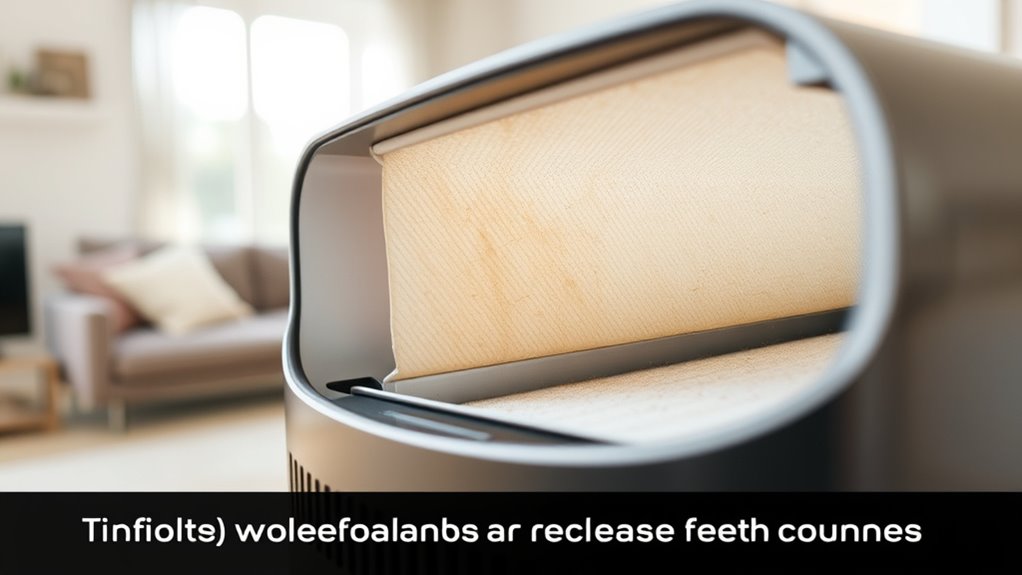
Several factors can affect how long your air purifier filter lasts before needing a replacement. Your air quality plays a significant role—higher levels of pollutants, dust, and allergens mean your filter works harder and wears out faster. The durability of your filter also matters; some filters are made to last longer, while others are designed for short-term use. Additionally, how often you run your purifier impacts lifespan—constant operation speeds up filter wear. Environmental conditions, such as humidity and presence of smoke or pet dander, can accelerate filter degradation. Using a HEPA filter can improve filtration efficiency and extend filter life. Proper filter maintenance and regular replacement ensure optimal performance and can prevent issues like reduced airflow or inefficiency. Maintaining optimal air quality standards supports the longevity of your filter and enhances the overall effectiveness of your air purifier. By understanding these factors, you can better gauge when it’s time to replace your filter, ensuring ideal air quality and maintaining your purifier’s efficiency. Proper care extends your filter’s lifespan and keeps your indoor air clean.
Typical Replacement Intervals for Different Filter Types
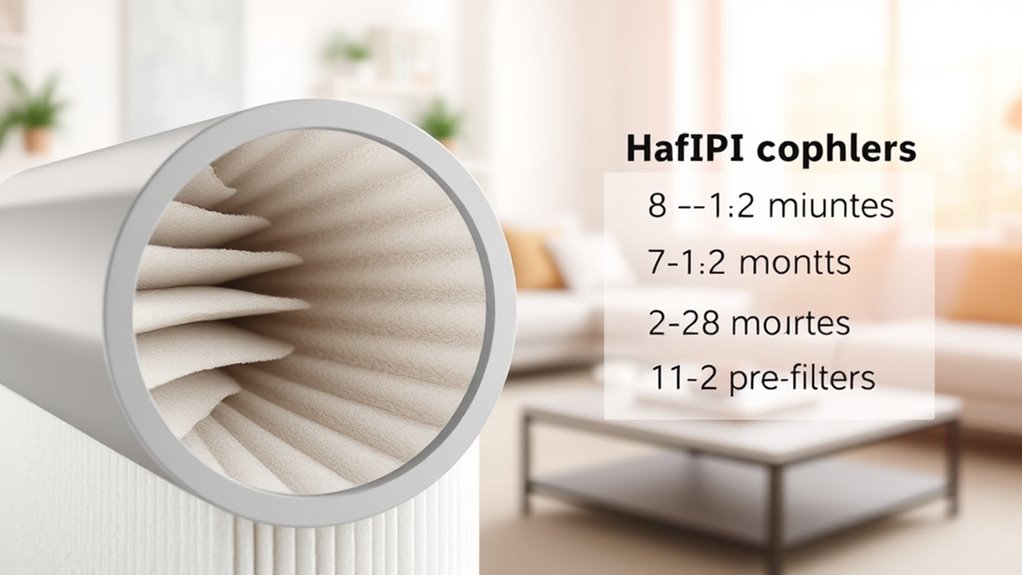
Knowing when to replace your filters depends on their type and usage. HEPA filters typically last 6 to 12 months, while activated carbon filters need replacement every 3 to 6 months. Pre-filters usually require changing every 1 to 3 months to keep your air purifier running efficiently. Incorporating sound healing science principles can also support overall well-being but does not replace regular filter maintenance. Additionally, understanding net worth growth hacks can help you invest in higher-quality air purification systems for long-term health benefits. Staying informed about AI advancements can also optimize your device’s performance and maintenance schedules over time. Recognizing angel numbers related to health and wellness can also provide spiritual guidance for maintaining a balanced environment. Regularly monitoring your air quality with smart sensor technology can further ensure timely filter replacements and optimal device function.
HEPA Filter Lifespan
HEPA filters typically need replacement every 6 to 12 months, depending on usage and air quality. While some air purifier myths suggest filters last longer than they actually do, regularly changing your HEPA filter ensures peak performance. If you notice reduced airflow or lingering odors, it’s time to replace it. Proper disposal is important—many filters can be recycled, so check your local recycling programs to reduce waste. Avoid delaying replacement, as a dirty filter can harbor bacteria and allergens, defeating the purifier’s purpose. Keep track of your filter’s age and follow manufacturer guidelines for replacement. Doing so maintains air quality and helps your device work efficiently, saving you money in the long run. Regular filter inspections can also detect potential damage before it affects performance, especially as some filters are sensitive to environmental factors. Remember, timely filter changes are key to healthy indoor air. Additionally, understanding the HEPA filter lifespan can help you plan replacements more effectively.
Activated Carbon Duration
Wondering how often to replace the activated carbon filter? Typically, you’ll want to change it every 3 to 6 months, depending on usage. Activated carbon is essential for odor elimination and carbon absorption, but it becomes saturated over time. When it’s full, it loses effectiveness. To keep your air fresh, monitor odor levels and check manufacturer recommendations. Incorporating utilitarian principles such as maximizing overall well-being through clean air can motivate timely filter replacements. Additionally, advancements in automation in business can lead to smarter maintenance schedules that help track filter performance more precisely. Understanding the effectiveness decay of activated carbon can further assist in optimizing replacement intervals. Regularly assessing filter saturation levels can further ensure optimal air quality and filter longevity. Recognizing signs of filter exhaustion helps prevent the decrease in filtration efficiency and maintains healthy indoor environments.
Pre-Filter Replacement Schedule
Regularly replacing your pre-filter is key to maintaining your air purifier’s performance. The filter material, often foam or mesh, traps large particles like dust and hair, preventing them from clogging the main filters. The replacement frequency depends on the filter material and your environment—typically every 3 to 6 months. If you have pets or live in a high-pollution area, you might need to replace it more often. Check your manufacturer’s guidelines for specific intervals, as some pre-filters are washable and reusable, extending their lifespan. Ignoring this schedule can lead to reduced airflow and decreased filter efficiency. Additionally, adaptive learning technologies from AI can help optimize your filter maintenance schedule based on usage patterns. Proper maintenance of filter lifespan ensures your air purifier functions effectively over time. Regular filter monitoring can also alert you to signs that a replacement is necessary before performance declines. Incorporating smart device integration can further help monitor filter condition and remind you when replacements are due. Staying aware of AI security vulnerabilities can inform you about potential risks to smart home devices, including air purifiers, ensuring you maintain a safe environment.
Signs Indicating It’s Time to Change the Filter
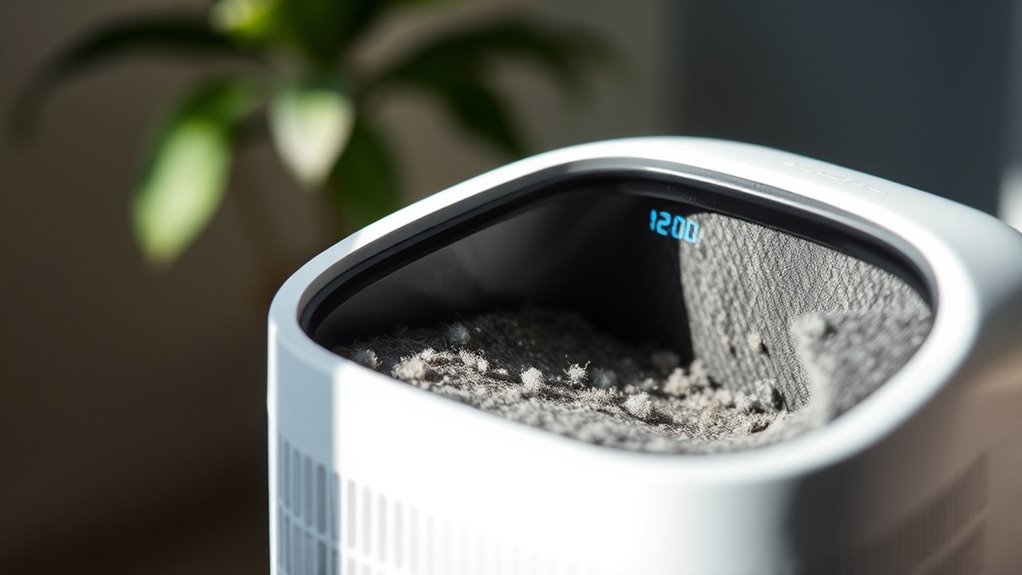
If you notice visible dirt or debris on your filter, it’s a clear sign you need to replace it. Unpleasant odors lingering in your space or increased allergy symptoms also point to a filter that’s no longer effective. Paying attention to these signs helps make certain your air stays clean and healthy. Regularly inspecting and replacing filters is essential for optimal air quality, and ensuring the filter’s proper maintenance can extend its lifespan and performance. Additionally, monitoring filter indicators if available on your device can help you determine when it’s time for a replacement. Using filters made from high-quality HEPA materials can improve filtration efficiency and prolong the time between replacements, ensuring your indoor air remains safe and clean.
Visible Dirt and Debris
When your air purifier filter accumulates visible dirt and debris, it’s a clear sign that it needs changing. Seeing dust, pet hair, or other debris on the filter indicates it’s working overtime and has reached its capacity. Ignoring this buildup can reduce your air purifier’s efficiency and compromise indoor air quality. When it’s time to replace, you’ll want to consider filter disposal properly, especially if the filter contains trapped allergens or pollutants. The replacement cost varies depending on your model and filter type, but delaying the change can lead to more costly repairs or higher energy bills. Regularly inspecting your filter for visible dirt ensures you replace it at the right time, maintaining ideal performance and protecting your health. Additionally, staying informed about air filtration technologies and AI-driven solutions in healthcare can help you make better decisions about air quality and related technologies.
Unpleasant Odors or Allergies
Unpleasant odors or persistent allergy symptoms are strong indicators that your air purifier filter needs replacing. Over time, the filter material in your device becomes clogged with pollutants, reducing its effectiveness. An outdated filter struggles to trap odors from cooking, pets, or smoke, allowing them to circulate through your space. Additionally, if you notice allergy symptoms worsening, it’s a sign the filter can no longer capture airborne allergens properly. Your air purifier’s design plays a role; some models have filters that need more frequent changes due to their filter material. Regularly checking for odors and allergy flare-ups helps you determine when it’s time to replace the filter, ensuring your air remains clean and healthy.
Impact of Air Quality and Usage on Filter Replacement
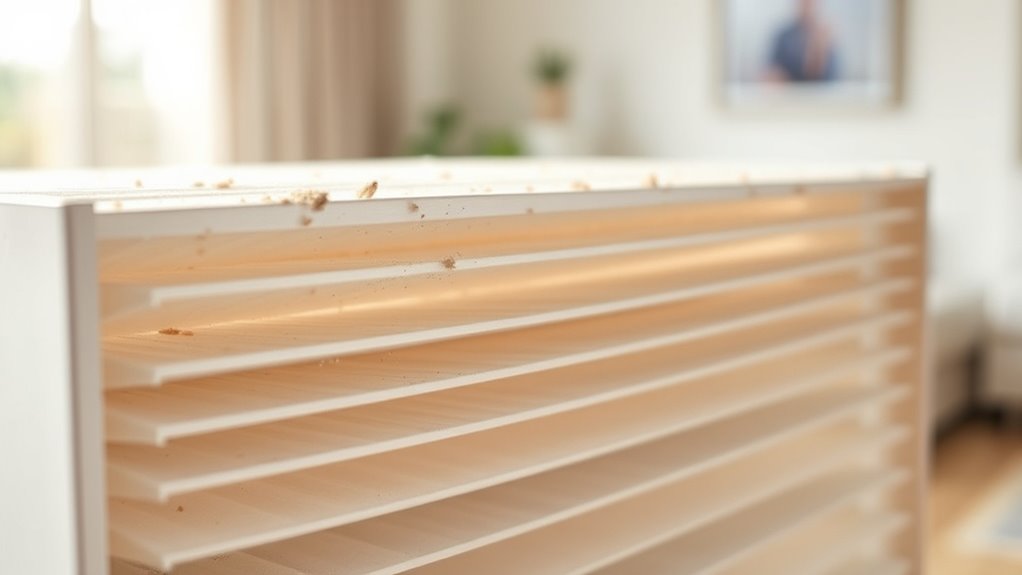
The quality of the air you breathe directly influences how often you need to replace your air purifier filter. If your environment has high levels of pollutants, dust, or smoke, your filter will fill up faster, reducing its effectiveness. Regular air quality improvement depends on your usage habits; running your purifier continuously accelerates filter wear. The durability of your filter material also plays a role—more durable filters last longer even with heavy use. On the other hand, if you use your purifier in a relatively clean space, you may extend the time between replacements. Monitoring air quality and adjusting usage accordingly helps maintain ideal filter performance and ensures you don’t replace it prematurely or too late.
How to Properly Maintain and Extend Your Filter’s Life
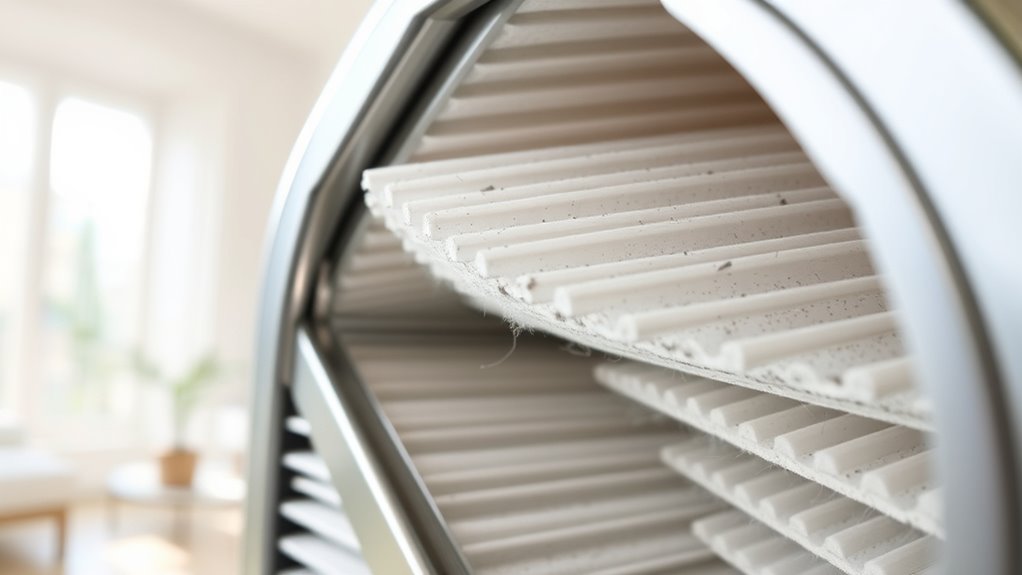
Maintaining your air purifier’s filter properly can reliably extend its lifespan and guarantee it continues to operate effectively. Regular air purifier maintenance is essential for ideal performance. To do this, consider the following:
- Clean or replace pre-filters regularly to prevent dust buildup, which helps prolong the main filter’s life.
- Monitor filter indicators and follow manufacturer guidelines for timely replacements or cleanings.
- Explore filter upgrade options, such as HEPA or activated carbon filters, to improve air quality and efficiency.
Manufacturer Recommendations and Guidelines
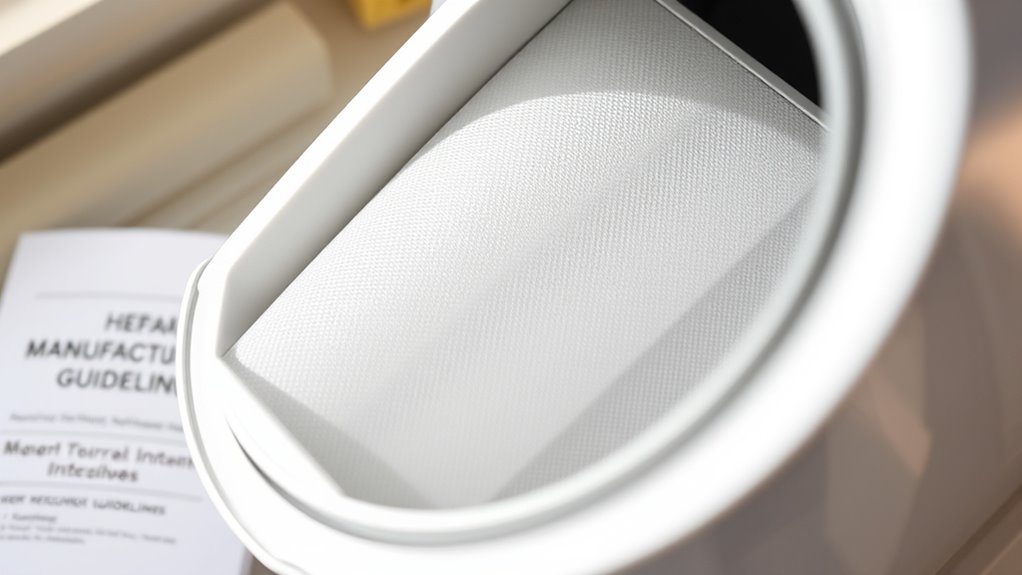
Following your manufacturer’s recommendations is vital to guarantee your air purifier performs at its best. Manufacturers base their guidelines on advanced air purifier technology and filter material durability, ensuring ideal performance and longevity. These guidelines specify how often to replace filters, considering factors like filter type and usage. Ignoring these instructions can reduce filter efficiency, compromise air quality, and strain your device. Always check the user manual or manufacturer’s website for specific timelines and maintenance tips. Proper adherence helps maintain the device’s functionality and extends its lifespan. Remember, each air purifier model may have unique recommendations, so following the manufacturer’s guidelines ensures you get the best results from your investment.
Tips for Choosing the Right Replacement Filters

Choosing the right replacement filters is essential to guarantee your air purifier continues to operate effectively. To do this, focus on three key factors:
- Air purifier placement: Position your unit in a central, unobstructed spot to maximize airflow and filter efficiency.
- Filter material choices: Select filters with high-quality materials like activated carbon or HEPA, suited to your needs, whether for allergies or odors.
- Compatibility: Always check your manufacturer’s specifications to verify the replacement filter fits properly and meets the required standards.
Frequently Asked Questions
Can I Clean and Reuse My Air Purifier Filters?
You might wonder if you can clean and reuse your air purifier filters. While some filters, like HEPA ones, aren’t designed for filter cleaning, certain pre-filters can be gently washed to extend their filter lifespan. Always check your manufacturer’s guidelines first. Regular filter cleaning can help you save money and maintain efficiency, but keep in mind that most filters will eventually need replacing to ensure peak air quality.
How Do Different Room Sizes Affect Filter Replacement Frequency?
You might think bigger rooms need the same filter change schedule, but that’s not true. Larger rooms have greater volume and filter capacity, so you should replace filters more often as they work harder to clean the air. For small rooms, filters last longer because the volume is less. Keep an eye on your air quality and follow manufacturer guidelines, adjusting based on room size and usage to maintain ideal performance.
Are There Health Risks From Using Expired Filters?
Using expired filters can pose health concerns since filter expiration means the filter no longer captures pollutants effectively. When filters are past their prime, dust, allergens, and bacteria may circulate in your air, potentially aggravating allergies or respiratory issues. To stay safe, replace your air purifier filter according to the manufacturer’s recommended schedule, especially if you notice decreased airflow or increased dust. Regular replacement helps maintain healthy indoor air quality and minimizes health risks.
Do Allergy Sufferers Need to Replace Filters More Often?
If you suffer from allergies, you should replace your air purifier filter more often to reduce allergy triggers. Regular filter maintenance guarantees your purifier effectively captures dust, pollen, and other allergens. When filters become dirty or clogged, they can worsen allergy symptoms. Check your manufacturer’s recommendations and replace filters promptly, especially during high allergy seasons, to keep your indoor air clean and minimize allergy triggers.
How Does Seasonal Change Impact Filter Lifespan?
Did you know seasonal variation can cut filter lifespan by up to 30%? As seasons change, increased dust, pollen, and humidity accelerate filter degradation, meaning you may need to replace it more frequently during spring or fall. During high pollen seasons, your filter works harder and wears out faster. Keep an eye on your air quality and replace filters sooner in seasonal shifts to guarantee peak purification and air health.
Conclusion
Think of your air purifier filter like a garden that needs regular tending. When you ignore the signs—like decreased airflow or musty odors—you’re letting your home’s air quality suffer. Just as neglecting your garden leads to overgrowth and decay, delaying filter replacement can compromise your health. Stay proactive, follow guidelines, and give your filter the care it needs. A well-maintained filter keeps your home’s air fresh, just like a thriving garden keeps the air around it vibrant.
